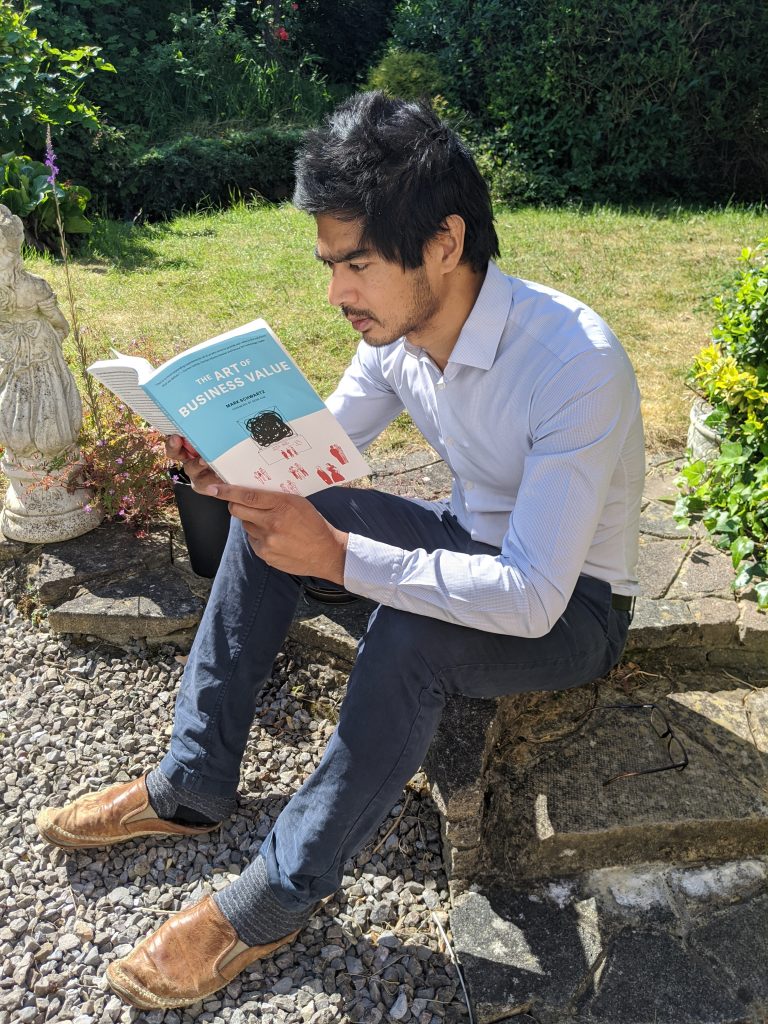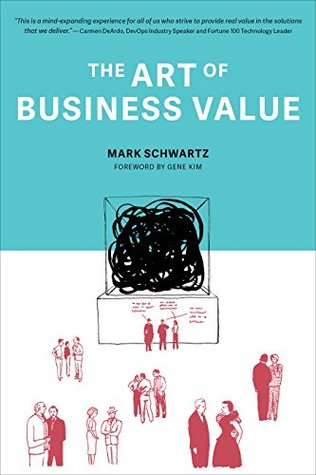The Situation

Often teams and leaders don’t work from a common understanding of business value. Without aligning to what is valuable, individuals will have an impaired ability to make trade-off decisions such as “Where should we focus our finite resources and attention”, and “What does good look like? And for whom?”.
Too often we don’t think in business value terms. We’re simply here to get the job done and move onto the next assignment or project. There’s a keenness to show output – the busy work which demonstrates effort and speed.
However, it’s important to pause and ask “Why is this project more important than these other projects? Who is it for? What’s the source of our confidence that it’ll benefit them?”
Business Value is elusive
The Art of Business Value, by Mark Schwartz, helps overcome the lack of understanding of what business value is. With refreshing wit and insight, Schwartz challenges the assumptions of many, such as those in leadership, financial accounting and within the agile community. He offers sound guidance that’ll help many determine the elusive meaning of business value that’s contextual to their organisation.
The book explains that when we consider business value we often turn to financial accounting measures such as Return On Investment or Net Present Value. Schwartz states such measures tie poorly to strategies and don’t sufficiently factor-in risk and uncertainty. Neither do these short-term measures do well at accounting for the inherent value locked-up in enterprise infrastructure and the business agility that such assets should enable.
Schwartz says that business value can be hidden in an organisation’s rules and processes. So rather than disregard bureaucracy, we should examine it to discover the values held within an organisation. If we consider bureaucracy as a product of institutional memory, its rules and processes can become a rich source to discover what an organisation values.
If we consider bureaucracy as a product of institutional memory, its rules and processes can become a rich source to discover what an organisation values.
The book also unpicks the thorny issue of who should be charged with establishing business value versus those who execute and deliver that value.
What is Business Value
Schwartz defines business value as a hypothesis held by the organization’s leadership as to what will best accomplish the organization’s ultimate goals or desired outcomes.
This definition recognises firstly that business value is not the same for all organisations, secondly that it cannot be boiled down to one measure, and thirdly determining business value necessitates a journey of discovery, dialogue and collaboration across many business areas.
Introducing Business Value thinking
With my support, many of my clients have taken such a journey. This has often started with a leadership envisioning workshop – an approach which sets out the organisation’s vision and which creates an open debate about the worthiness of strategic initiatives.
With such approaches leaders create a mindset and process which shifts the conversation away from endless horse-trading and towards organisational learning through iterative execution and review.
In a dynamic and uncertain world, the approaches I’ve shared and the thinking conveyed in The Art of Business Value will create a common understanding of business value. Doing so enables teams and leaders to align on what’s valuable and create a responsive organisation.
Conclusion
With The Art of Business Value, in a little over a hundred pages, Mark Schwartz has done a fantastic job to help challenge convention and offer guidance that’ll help our organisations and clients define what it values and achieve success.

